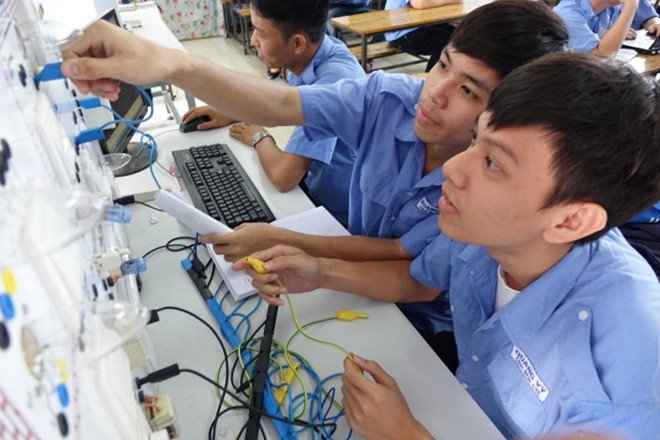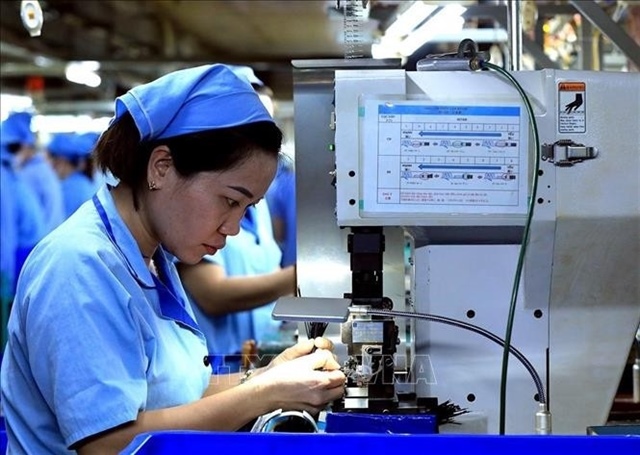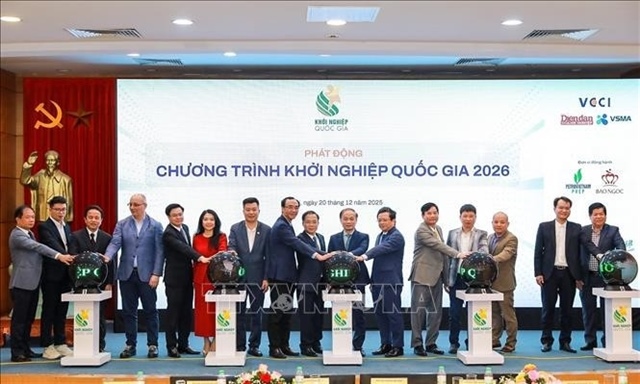VN needs half century to catch up with Thailand’s labor productivity
VN needs half century to catch up with Thailand’s labor productivity
Vietnam’s GDP in 1990 is equal to that of Thailand in the 1960s. By 2069, Vietnam is expected to catch up with its neighbor’s labor productivity.

The labor productivity of the whole economy in 2014 reached VND74.7 million/employee, up 4.9% compared with 2013. On average, it increased by 3.7% per year in the period from 2005 to 2014.
Although labor productivity of Vietnam in recent years has improved significantly, if it is assumed that the growth of labor productivity of Vietnam and some neighboring countries will continue at the same average rate of the 2007-2012 period until 2038, Vietnam can catch up with the labor productivity of the Philippines, and up to 2069 with the labor productivity of Thailand.
81.8% of workers are untrained
Explaining how to calculate labor productivity, Dr. Ho Dinh Bao, a member of the research team of labor productivity growth of Vietnam of the Vietnam National Economic University, said social labor productivity (VND/labor) is an indicator reflecting the performance of labor, often measured by total domestic product (GDP)/the total number of working people on average. The MPI calculated labor productivity for laborers from 15 years old upward.Notably, if compared with China and India, Vietnam’s labor productivity has risen more slowly. Specifically, Vietnam’s labor productivity is 1.3 times less than that of China’s in 1994 and 2.8 times in 2013. The gap between Vietnam and India is1.6 and 1.7 times in 1994 and 2013.
Similarly, in terms of parity purchasing power, the difference between the labor productivity of China and Vietnam increased from $771 in 1994 to $9,545 in 2013, and from $1,396 to $3,867 between Vietnam and India.
The MPI provided a series of factors that affect labor productivity of Vietnam. In particular, in terms of economic structure, the industry, construction and services, especially the services that are the "motive" or the "lifeblood" of the economy such as finance and credit, still account for a low proportion compared with other countries in the region.
According to the MPI, there were 9.6 million trained workers of the total of 52.7 million employed people in 2014.
The proportion of labor in agriculture, forestry and fisheries was quite high (46.3% in 2014) and higher than other countries in the region. The majority of employees working in this sector are unskilled, and have seasonal, unstable employment, so the added value is not high, resulting in low labor productivity. This area employed more than 46% of the country's labor force but only generated 18.1% of GDP.
According to the MPI, Vietnam had 9.6 million trained workers of a total 52.7 million employed people aged 15 and older in 2014 (18.2%).
Establishment of labor productivity national committee
To raise labor productivity, the MPI recommended three groups of solutions on institutions and measures to enhance labor productivity for the business sector and to enhance productivity.Particularly, the Ministry has proposed to set up the National Labor Productivity Committee, with representatives of the government, businesses, associations, trade unions and scholars. This agency will be a permanent and specialized body on labor productivity of Vietnam, with the mission of building and implementing the national strategy on improving labor productivity of Vietnam.
The Ministry also suggested selecting some fields (apparel, machinery manufacturing, and electronics) and some provinces to pilot the program to boost labor productivity. It hoped that the success of this pilot program will create effective momentum for promoting the dynamics of labor productivity growth in the country.
At the most recent cabinet meeting, after hearing and discussing the above report, the Government assigned the Ministry of Planning and Investment to consult with experts, scientists, determine the method for calculating labor productivity suitably with Vietnam, and complete the plan to raise labor productivity of Vietnam to submit to the Prime Minister in November 2015.



















